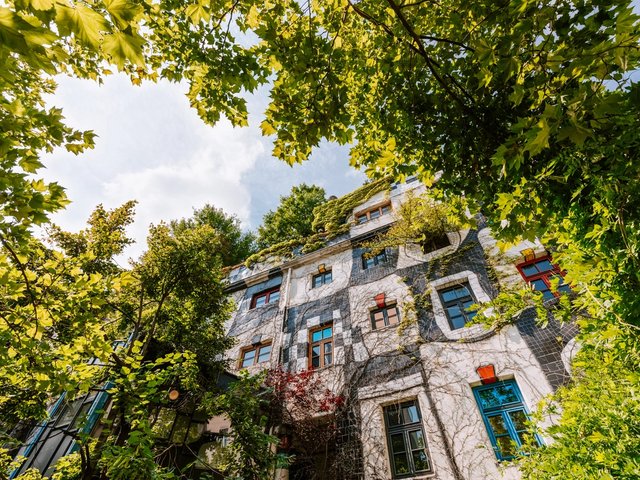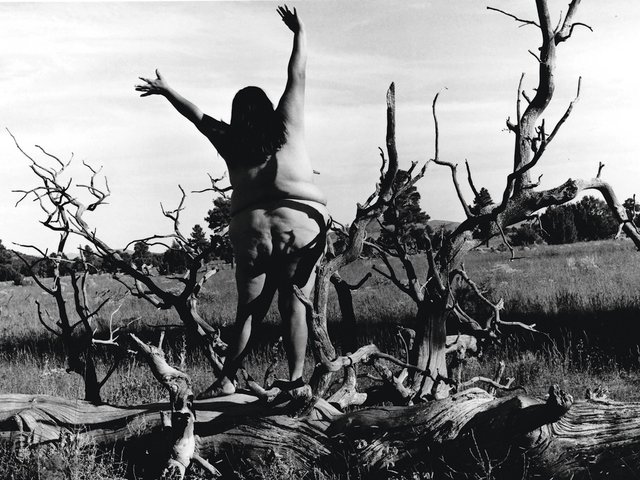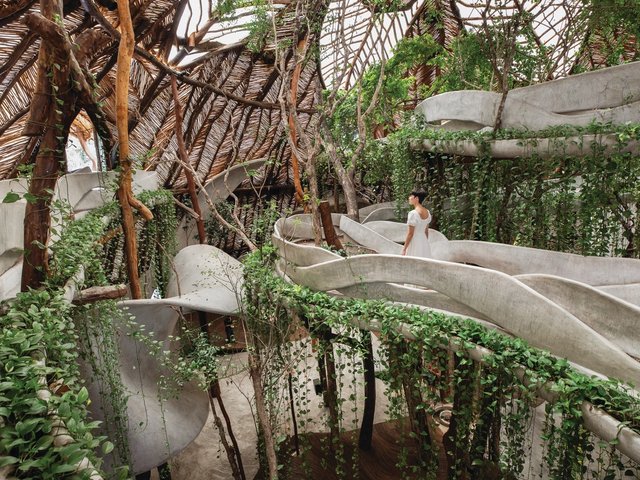As climate catastrophe looms, institutions across the world have been waking up to the realisation that simply proclaiming good intentions is not enough. To make a real difference a designated member of staff must be hired. The Serpentine Gallery led the field in 2018 when, inspired by the 2014 show Extinction Marathon curated for the space by the radical artist Gustav Metzger, it launched its ongoing 'Back to Earth' research and exhibitions programme and appointed Lucia Pietroiusti as the curator of general ecology. Pietroiusti—who then went on to curate the astonishing Golden Lion-winning opera-cum-performance Sun & Sand (Marina) at the 58th Venice Biennale—continues to head up all matters environmental and ecological at the Serpentine.
Tate has been another trailblazer. It has employed a full-time environmental sustainability manager since 2016 and shortly after declaring Climate Emergency in 2019 they also formed a Climate Emergency Working Group comprising representatives from Tates Modern, Britain, Liverpool and St Ives. In addition a Tate-wide Green Team reaches into and impacts all departments including curatorial, estates, commerce and collection care. At time of writing Tate are now further signalling their environmental commitment by hiring an Adjunct Curator for Art and Ecology to further engage with climate and social justice across the gallery’s programmes and collections. The successful candidate will be announced in the next month or so.
Other museums and galleries are also devoting specifically curatorial posts to the climate and ecological crisis. Among these are The Royal Ontario Museum which in 2021 appointed environmental scientist Dr Soren Brothers as Curator of Climate Change, a job he fruitfully combines with his research as professor at the Department of Ecology and Evolutionary Biology at the University of Toronto. “Climate change can be hard to link to emotionally and art can help us grapple with the immensity of the issue,” he says. Brothers is especially keen to work with local and indigenous Canadian artists, declaring that “ I want to listen to people’s experiences. I want to create community resources and work with the city on climate adaptation and mitigation. I want the museum to help people understand what we’re already doing as a society so they can also feel some hope.”
These feelings are shared by John Kenneth Paranada, who was appointed earlier this year as the curator of art and climate change at the Sainsbury Centre in Norfolk, UK. Formerly a curator at the Zabludowicz Collection in London, Paranada describes his remit as “trying to offer warnings and hope to people and to articulate the complexity of climate change, both historic as well as more human driven Anthropocene climate change.”
The Sainsbury Centre is part of the University of East Anglia (UEA) and Paranada aims to collaborate closely with UEA’s Tyndall Centre for Climate Change Research “to look at their research and try to translate it to an experience that is in the realm of art and to make the language of science more digestible and more visual.” He is also forging links with Norwich University of the Arts (NUA). “We’re collaborating closely with NUA, especially in the intersections of design, visual art and contemporary art”, he says.
These partnerships and concerns will be reflected in the Sainsbury Centre’s Autumn season which goes under the umbrella title of ‘Planetary Adaptations: how do we adapt to an ever-transforming world?’. The Adaptations programme is currently being shaped but will include a show on the theme of plastics and also an exhibition curated by Paranada entitled Sediment Spirit: Towards the Activation of Art in the Anthropocene. Paranada is still putting together the show, but reveals that its “proactive and interactive artworks” will include a specially commissioned intervention into the Sainsbury Centre’s collection of ancient Peruvian artefacts by Claudia Martinez Garay, as well as works by Joseph Beuys loaned by Tate and—hopefully—the permanent planting of seven of Ackroyd & Harvey’s Beuys’ Acorns oak trees in the sculpture park.
“Sediment Spirit is taking place across the Sainsbury Centre space and there will also be new commissions in our sculpture park as well as specially installed works in the city centre—it’s a new experimental format to activate and heighten the idea of ecological awareness” he says. According to Paranada the exhibition will also be “ an urgent and timely reminder that our home is not just our house, the building or the country we live in, but the Earth itself. By choosing more sustainable ways of living we can all play a part to prolong its survival.”
Ah yes, the building. Norman Foster’s hangar-like, extensively glazed Sainsbury Centre may have been a revolutionary art gallery when it opened its doors to house the Sainsbury Collection in 1978, but Paranada agrees that it is devilishly difficult to heat and insulate. “It’s not energy efficient” he admits. “We are talking to Foster & Partners and to try and make the centre more sustainable as we aim to become net zero by 2045”. While it has been standard Sainsbury Centre policy “for the last decade” to recycle all their exhibition builds, prioritise local loans and use sea freight as much as possible, Paranada declares that he and the Sainsbury Centre’s executive director Jago Cooper are now galvanising efforts for their building and practices to reflect what their programmes preach, stating that “it’s already part of our agenda and we will also be collaborating with the Tyndall Centre on more sustainable activities and exhibitions.”
For the bottom line is that while an institution’s programmes may educate and inspire, they must also go hand in hand with taking accountable action to slash their environmental impact. And this comes back to having specific staff members—curatorial or otherwise—to make sure that this happens. To this end the Victoria & Albert Museum now has in place a full time director of sustainability; the Horniman Museum in South London has appointed a climate and ecology co-ordinator and for the past year the Environmental Council of the Museum of Contemporary Art (Moca) Los Angeles has been supported by a full time environmental sustainability strategist.
Just a couple of months ago the Guggenheim in New York also nailed its environmental colours to the mast when it created the new full time post of associate director of sustainability to work with its existing 'green team'. Let’s hope that institutions worldwide will follow all of these leads. As the Sainsbury Centre’s Ken Paranada says, "the next decade is crucial and we are all in the same boat".







